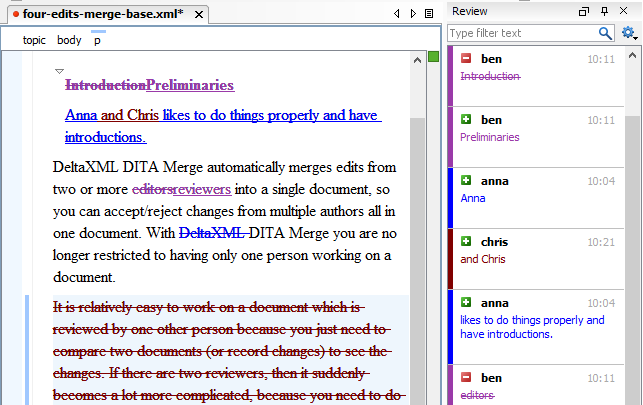In my previous blog post
Reviewing XML Documents for an N-Way Merge
, I developed some ideas for reviewing XML Documents for an N-Way Merge, based on a prototype web app. Now it’s time to looking beyond simply reviewing document revisions to the active process of accepting and merging them.
In this post I’ve again used DeltaXignia’s DITA Merge solution to produce a single ‘deltaV2’ document that collates changes from 4 revision authors. A small set of XSLT output filters (included in the DITA Merge samples) was then applied to the output to produce a file ready for opening in the oXygen XML authoring tool. The DITA Merge demo plugin for the oXygen tool was used to provide the interactive merge features.
Before looking at the plugin capabilities I’d like to first take a look at the ‘vanilla’ oXygen editor’s own excellent track-changes capability, to see what this gives us.

oXygen Authoring Tool. This track-changes mode is suitable for sequential review sessions
As shown above, track-changes mode in oXygen provides very useful features with revisions from multiple authors supported. But, by design, track-changes mode does not support the merging of concurrent revisions, also, all contributing authors/reviewers must be using an editing system that supports oXygen’s own track-change format and must also remember to turn this feature on. Let’s now have a look at how oXygen’s track-changes mode is supported at the XML code level, just in case the XML format can record concurrent editing information even though the application doesn’t:



